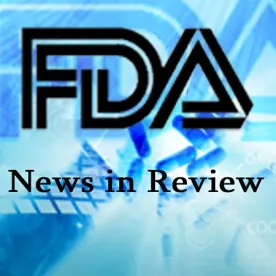After months of pressure from industry, health practitioners and even congressional stakeholders, FDA has finally proposed a convention for assigning nonproprietary names (also known as proper names) to biological products. The Agency published notice of its draft guidance on August 28th in the Federal Register, along with a proposed rule to assign new proper names to some already approved biologic products, including the only biosimilar product licensed so far under the abbreviated 351(k) pathway.
The industry has been waiting for some time for FDA’s policy position on nonproprietary naming of biological products, particularly for biosimilars and interchangeable biosimilars. With its position only partially decided in the draft policy, as described further below, the wait will go on while industry players continue advocating their positions to the Agency during the comment period.
So, what has FDA proposed?
In order to avoid inaccurate perceptions regarding the safety or effectiveness of biological products based on their licensure pathway – whether an original biologics application or an abbreviated biosimilar application – FDA has determined that the naming convention will apply to all biological products both prospectively and retrospectively. Per the draft guidance, all biological product nonproprietary names would consist of a core name and a designated four-letter suffix. This convention will permit products with the same core name to be grouped together in electronic databases and systems, a benefit that would not be possible through use of a prefix.
-
Biosimilar Products: For approved biosimilar products, FDA has proposed using the same core name as the reference biological product, then adding a unique suffix to identify each biosimilar product. The core name would be the reference biologic’s drug substance established name, and the suffix would be four lower-case letters with no meaning. The draft guidance includes several “rules” for assigning this meaningless suffix, such as the requirement that it not imply anything about the product’s safety or effectiveness. Reference biologics would also have their own unique four-letter suffix.
-
“Related” Biological Products: The same framework would apply to “related” biological products, which are products that are licensed pursuant to a stand-alone (as opposed to abbreviated) application, but for which there is a previously licensed biologic with the same drug substance.
-
Interchangeable Biological Products: For interchangeable biological products, however, FDA intends to use the same core name and suffix convention but it has not decided on the exact nature of the suffix. The Agency is seeking comments on whether an interchangeable biosimilar’s four-letter suffix should be distinct from, or the same as, that of its reference product.
FDA also is requesting comments on several very interesting questions that are set out in the Federal Register notice of availability, such as (i) how to handle the situation in which an approved biosimilar later is approved as interchangeable via a supplemental application, (ii) how best to educate different stakeholders about the naming convention, and (iii) the challenges and benefits of certain naming conventions, such as using a suffix that designates the biological product’s license holder.
In a blog post announcing the guidance and proposed rule, FDA’s drug and biologic Center directors highlight 2 main issues that the Agency is trying to address with the naming convention: (i) the inadvertent substitution of biological products that may occur when identical names are used but products have not been deemed interchangeable; and (ii) safety monitoring and tracking of specific biological products in both active and passive surveillance systems.
Whatever naming convention FDA chooses, it may be fitting that the proposed suffix length is four letters – the naming issue is only one piece of the overall puzzle.
Comments to the draft guidance can be submitted at any time, but if you want to be sure FDA considers them before working on the final guidance, the deadline is October 27, 2015. We encourage interested parties to consider FDA’s various questions about implementing the naming convention – especially health care systems, pharmacies, and PBMs who would be directly affected by a final decision but who do not typically provide input on FDA solicitations (which are often seen as limited to manufacturer-only issues).
Comments on the related proposed rule need to be submitted by November 12, 2015.





 />i
/>i

